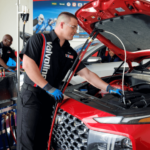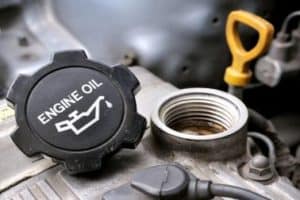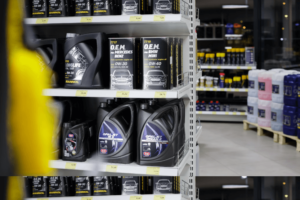What’s wrong with changing your car’s transmission fluid? You’ve been doing change oil regularly. But you may ask: will a transmission flush hurt my car?
A transmission flush will not hurt your car if you do it right. Most automakers suggest a transmission flush every two years or 30,000 miles. However, not all of them agree that it should be this frequent. Some carmakers recommend a flush every 6 1/2 years or around 100,000 miles. Other car manufacturers don’t even recommend it at all.
Be aware, though, that majority of car manufacturers recommend against using transmission flushing substances. Most automakers will void the warranty of your transmission if they can prove that you are using such chemicals. These chemicals contain strong substances that can destroy your transmission; that’s why they don’t want you to use them.
Read on to learn more about the transmission flush, if it’s safe or not for your car, and other information you need to know if you should do it.
Will a Transmission Flush Hurt My Car?
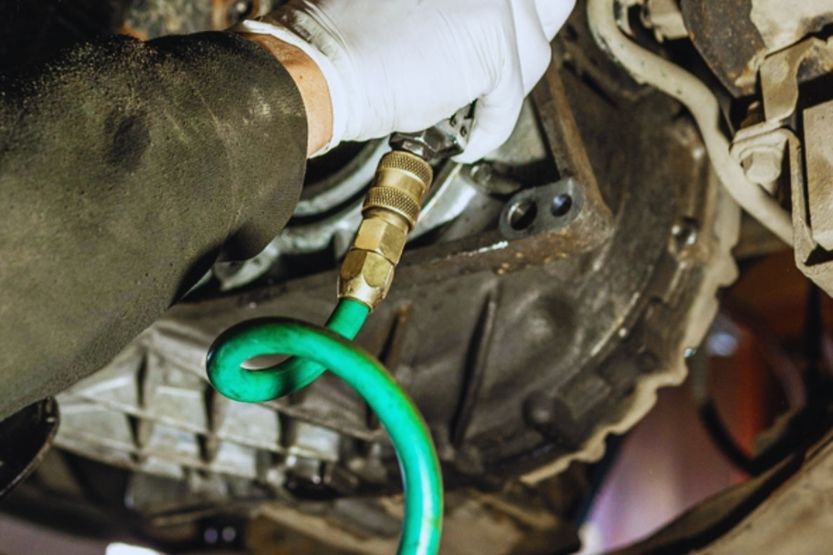
What Do Experts Recommend?
A transmission flush won’t hurt your car if the service is done right. Some say that it is a 100% safe procedure. Most automakers recommend a transmission flush every two years or 30,000 miles. However, some carmakers believe that it should not be this frequent. They say you should flush only every 6 1/2 years or 100,000 miles.
Some People Expect Flush to Fix Transmission Issues
However, some people expect a transmission flush to fix serious transmission problems such as stalling and slipping. That’s why transmission flushes have earned a bad reputation.
Why Some Manufacturers Do Not Recommend Flushing
Most car manufacturers also advise against the use of transmission flushing chemicals. They will void your car warranty if you use such chemicals because they contain substances that can seriously damage your transmission. For this reason, they don’t recommend this service.
Prolong Transmission’s Life
Still, many automakers recommend this type of flush for your car because it can prolong the life of its transmission. If the transmission fluid is changed, it can help restore the transmission system to its former self since it will remove the old fluid and the contaminants that have degraded it.
Are Transmission Flushes Safe?
Some people say that a transmission flush will do more harm than good. But that could only be possible if the car shop performing the service uses a machine that pushes the fluid backward instead of gently flushing it in the right way.
Risk of Transmission Failure
There’s also one more reason why a transmission flush can harm your car. If your car has reached or has already gone more than 100,000 miles, and you never gave it even a single transmission flush, there’s a risk the flush can cause your transmission to fail. Some mechanics don’t recommend it.
eCVT Transmission – What Is It? How Does It Work?
What Is a Transmission Flush?
Replaces Old Transmission Fluid
A transmission flush replaces the old fluid with the same fresh transmission fluid. The flush will drain all the old fluid from the transmission and fill it up again with a fresh one.
Transmission Is Connected to a Machine
To do this task, the mechanic will connect your car’s transmission to a machine that will thoroughly flush out the fluid inside it. The machine will run a solution through its conduits or lines until all the transmission fluid that comes out is clean. Some machines flush out the old fluid while adding the new fluid.
Have a Professional Transmission Flush
It is best to use the professional transmission flush offered by car service shops. They will attach your car to their flushing machine. This machine will use your car’s transmission pump to flush out the old fluid and not forcibly gently.
Introduce a New Transmission Fluid
While doing so, their machine will also pump in new fluid simultaneously. If they find that the fluid in your transmission is filthy, they will run a solvent through the line. This will remove the debris from the old fluid. They will do this before they introduce new transmission fluid into your transmission.
Risks of Getting Transmission Flushes
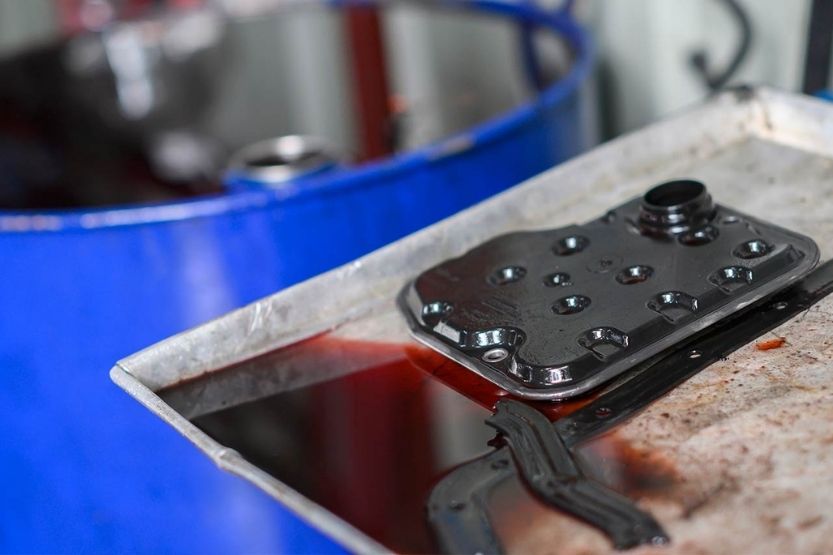
While they say transmission flushes won’t hurt your car, there are still some risks that you need to know. This type of flush can indeed extend the life of your transmission. However, the problem is the way the service is performed:
1. Incomplete Removal of Old Transmission Fluid
If you use the usual transmission service, they cannot remove all the old transmission fluid. A conventional service will only drain out the old fluid by gravity. They will open the drain plug and let the old fluid flow out.
This service can only remove 70% of the old fluid inside the transmission casing. Some are trapped inside the torque converter or the cooler. It’s impossible to drain them out. A flushing machine can drain out 90% of the old fluid or even more.
But as long as you are following your car’s regular servicing schedule and replacing the transmission fluid every time the manufacturer says you should, your transmission should be in good shape.
2. Most Car Shops Do Not Change the Filter
It may be true that the best way is to hook up your car to a machine that flushes out the old transmission fluid. However, this is an easy, quick-fix, money-making scheme in most car service shops. They often neglect a critical thing in servicing the car’s transmission system.
Most car shops change the transmission fluid, but they don’t change the filter. Around 60% of modern vehicles use an internal transmission filter. Ensure that you replace the filter each time the transmission fluid is changed.
They don’t do this service because it is messy and time-consuming. However, if you go for a complete transmission fluid change, they should also provide your car with this service. It’s not just a fluid drain, but you should also do complete fluid and filter change.
3. Transmission Flushes Can Hurt Your Transmission
A transmission flush is not good for your transmission if it uses harsh chemicals. Most carmakers void their transmission warranties if they find out that these chemicals are being used for transmission flushing. They advise against using these chemicals because they can damage the car’s transmission.
4. Not Properly Connected External Machines
It is interesting to note that most automakers advise against using external machines for transmission flushes. They believe that they can cause damage to the transmission if they are not appropriately connected because they can pressurize or block the wrong passages inside the assembly.
The transmission can run dry in some of these machines because they remove more fluid than they can add in. You should also thoroughly clean the flush machine before using it again for another flush. If not, it can pump a small quantity of the wrong fluid into another transmission. This could then put to risk the transmission a mechanic is servicing.
Again, will a transmission flush hurt my car? A transmission flush every two years or 30,000 miles will not harm your car when properly done. However, some carmakers suggest that you only flush your car every 6 1/2 years or 100,000 miles. Meanwhile, other car manufacturers are against using transmission flush chemicals.
Signs Your Transmission Needs Service
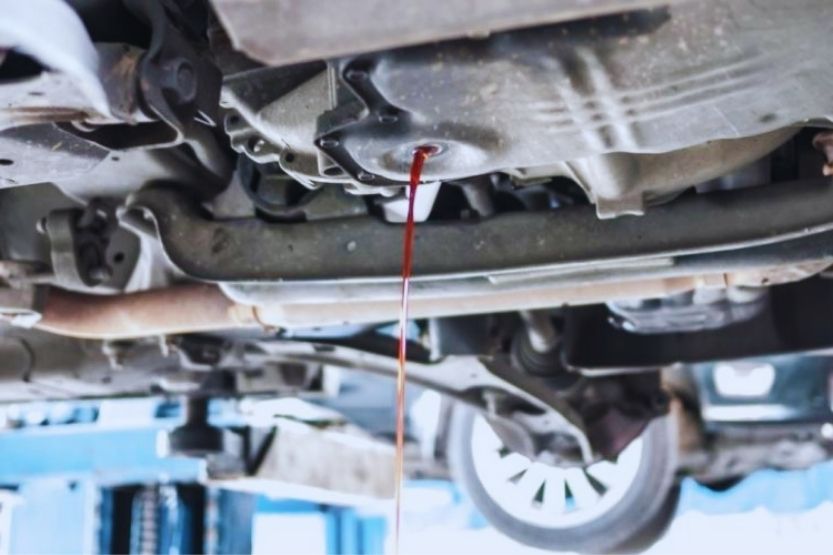
Do I need a transmission flush? If you are religious in changing your motor oil, you should also do your transmission fluid. The transmission of your car also deserves regular service as the car engine. Don’t wait for the following signs to show up before you take it into the car shop for the service that it needs:
1. Gear Shifting Problems
If there’s too much sludge or dirt inside the transmission case, your gear shifting will be sluggish. Your car will either change gears too late or too quickly. If you have a manual transmission, you will find it hard to change gears.
2. Sudden Car Movements
If the transmission fluid is already dirty, its flow inside the housing will not be consistent. The debris or sludge in the fluid will cause this turbulence. So, the operation of the gears and other internal moving parts of the transmission system will not be smooth. Every time you shift gears, you will feel that your vehicle seems to surge ahead suddenly.
3. Grinding Noise in the Transmission
If grinding noises are coming from the transmission, stop your car but don’t shut off the engine. Check the level of the transmission fluid. If the level is still acceptable, the transmission requires a flush.
Also, make sure that the color of the fluid is still bright red. If it’s dark brown or black, either sludge or grime is present. So, it needs a transmission flush.
4. Movement Delay
If you change gears while driving and your car seems to hesitate for one or two seconds before it engages, the transmission fluid is contaminated. After checking and finding no other problem, the transmission is due for a flush.
5. Slipping Gears
Contaminated transmission fluid maybe just like not having enough fluid because it can also reduce hydraulic power. This is one cause of slipping gears. The right amount of fluid helps the transmission to create enough pressure so that gear can stay in its appropriate place.
When to Have a Transmission Flush
If you want to play it safe, follow the recommendation of your car’s manufacturer. And what is the usual advice of most car makers? They say you have to do it every two years or 30,000 miles.
But they all don’t agree on this one. Some suggest that you do it every 100,000 miles or 6 1/2 years. You will be surprised that some carmakers don’t even recommend transmission flushes at all.
And then again, there are car makers that say the transmission flush can help your transmission last longer. They say that it’s like any other preventive maintenance procedure that can extend the life of any machine part.
Here are some signs that will show you it’s time for your car to have a transmission flush:
1. Transmission Problems
As I have mentioned above, five transmission problems will cause your transmission to fail if not promptly corrected. So, be watchful of these problems.
2. Transmission Fluid Looks Burnt and Dirty
Check the color of the transmission fluid by dipping the dipstick into the transmission. If it looks dirty and black and smells burnt, it’s time for a transmission flush. Good transmission fluid looks clear, bright red, and smells sweet.
Conclusion: Will a Transmission Flush Hurt My Car?
A transmission flush won’t hurt your car if you do it right. Most automakers suggest this flush for every two years or 30,000 miles. However, not all carmakers agree that the transmission flush should be this frequent. Some recommend that you flush only every 6 1/2 years or around 100,000 miles.
Other car manufacturers don’t even recommend flushing the transmission fluid. Most automakers also advise against using flushing chemicals. They say that these chemicals contain harsh substances that damage your car’s transmission.

![What Is a Transmission Flush? [All About Transmission Flushes] what is a transmission flush](https://roadsumo.com/wp-content/uploads/2021/12/what-is-a-transmission-flush-150x150.jpg)
![Transmission Flush Cost [How Much Is It?] transmission flush cost](https://roadsumo.com/wp-content/uploads/2022/10/transmission-flush-cost-150x150.jpg)

